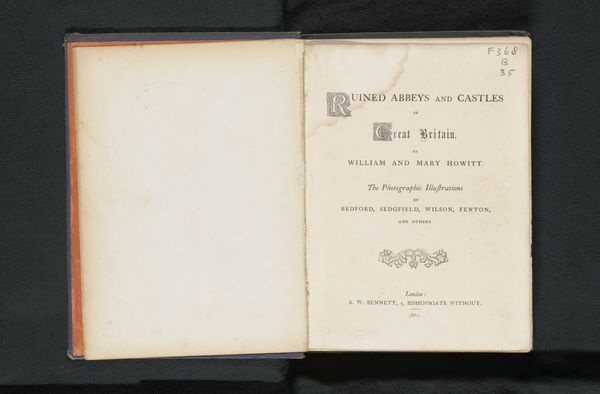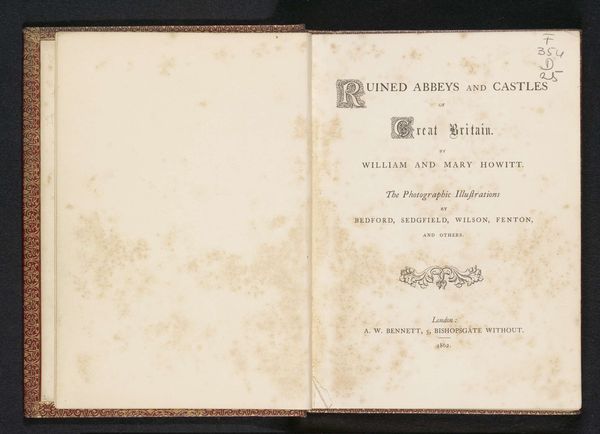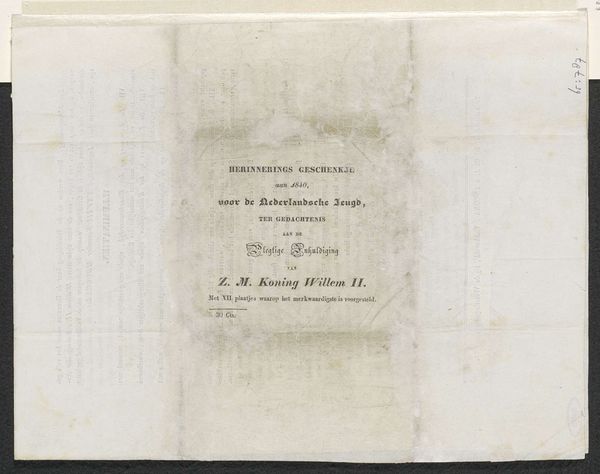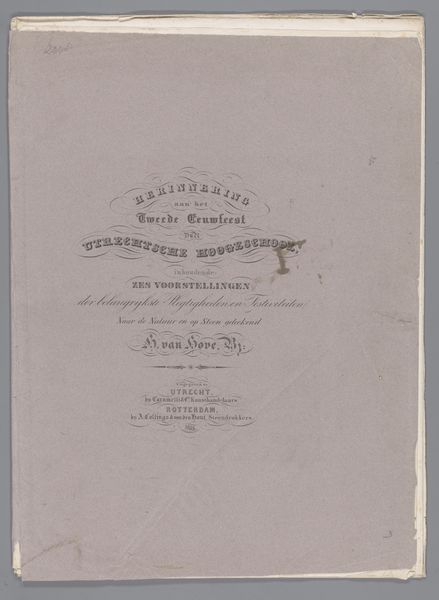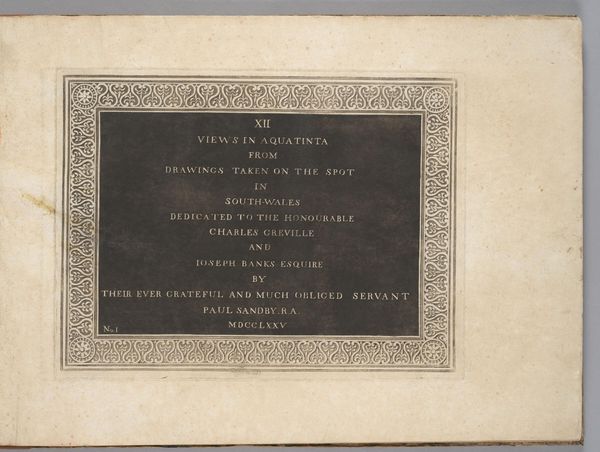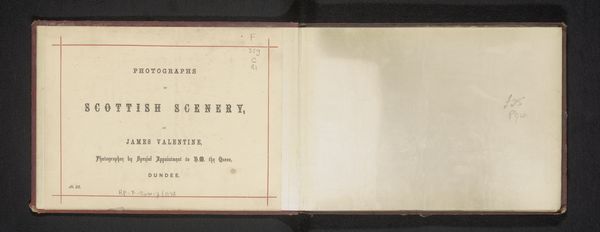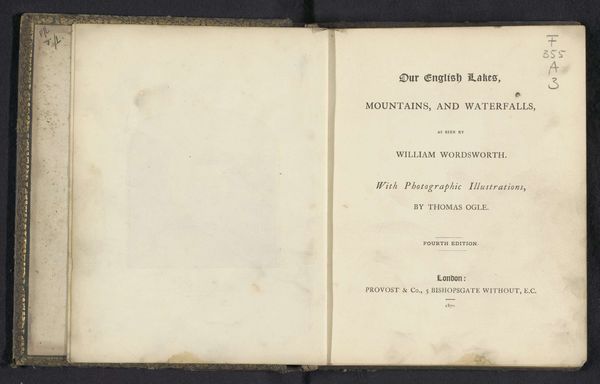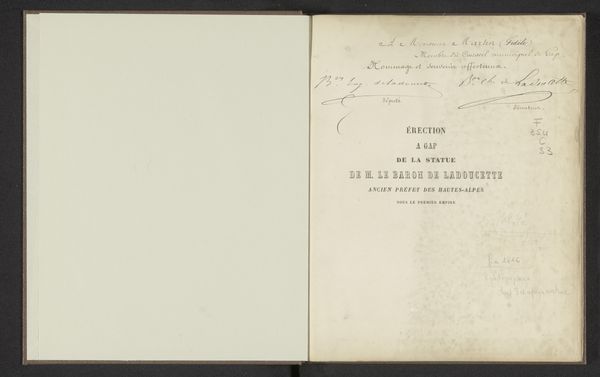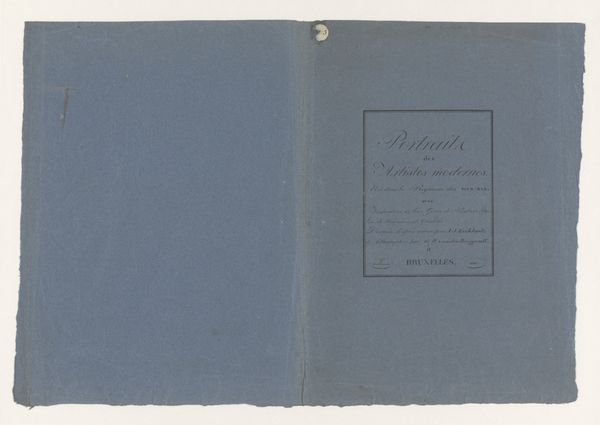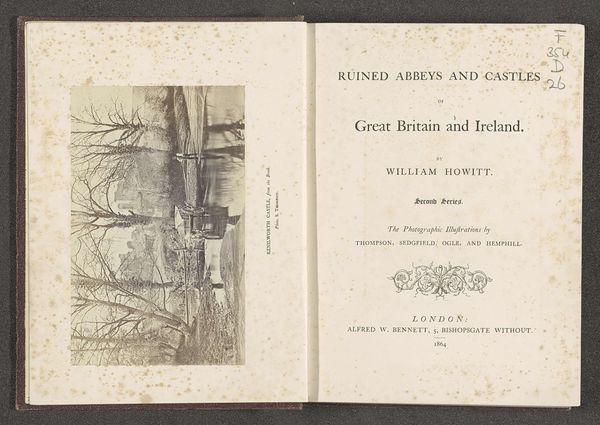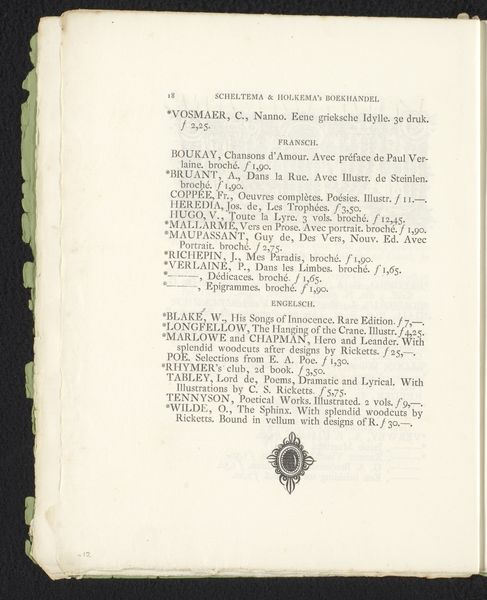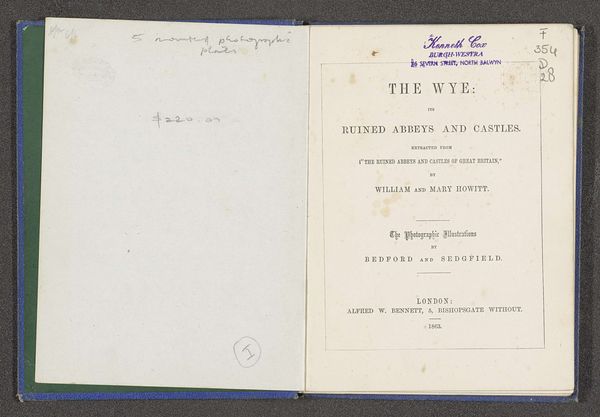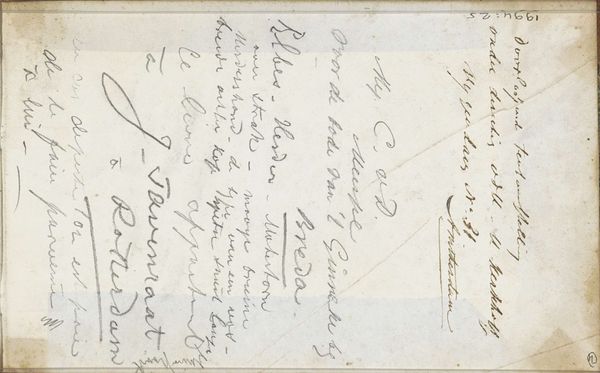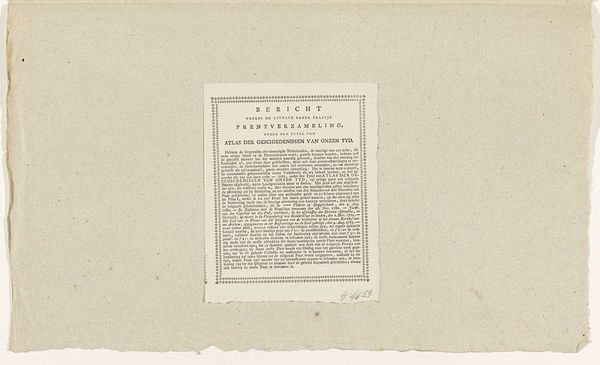
print, photography
#
aged paper
# print
#
sketch book
#
hand drawn type
#
hardpaper
#
photography
#
personal sketchbook
#
journal
#
fading type
#
sketchbook drawing
#
sketchbook art
#
small lettering
Dimensions: height 225 mm, width 175 mm, thickness 25 mm
Copyright: Rijks Museum: Open Domain
Editor: So, this is the title page from "Ruined Abbeys and Castles of Great Britain," published in 1862 with text by William and Mary Howitt. It lists the photographers who contributed to the photographic illustrations. The page has a definite antiquated feel, and a simple typeface. What stands out to you? Curator: The key phrase is "Ruined Abbeys." What do ruins signify? A break with the past, yes, but also a persistent, almost haunting, presence. The book is from the Victorian era, a time fascinated by history, and melancholic subjects. Notice the typography - the elaborate "R" in "Ruined", the leaves ornamenting at the bottom. These aren't simply decorative; they speak of growth emerging even amidst decay, an act of rebirth if you will. Editor: I hadn't thought about the leaves that way. I was too caught up on the "ruined" aspect as purely negative, about destruction. Curator: And what did these abbeys represent? Faith, community, power. To see them in ruin would resonate deeply. This image of the book's title page signals a romanticizing of history but one infused with a bittersweet sense of loss. What symbols of loss might be highlighted or avoided? Editor: Maybe any overt religious symbols would be downplayed. Curator: Precisely! What’s intriguing is the visual absence of the ruins themselves. It prepares the reader for the photographers’ illustrations while prompting contemplation of these layered meanings even before we see the ruins themselves. This sets up a relationship of seeing and feeling history. Editor: It's interesting how the lettering itself conveys meaning, and also serves to direct the gaze to the images contained within the book. Thanks, that was very enlightening. Curator: Indeed. It’s the subtle conversation between text and image that shapes our understanding. There's always a story behind what is made visible, and what isn't.
Comments
No comments
Be the first to comment and join the conversation on the ultimate creative platform.
